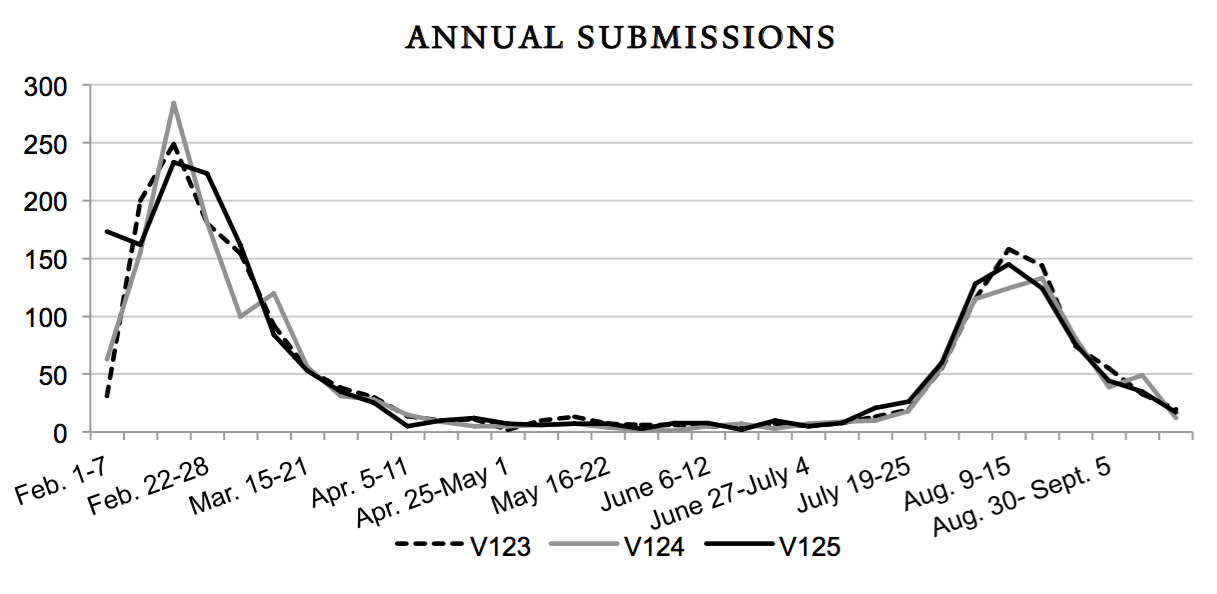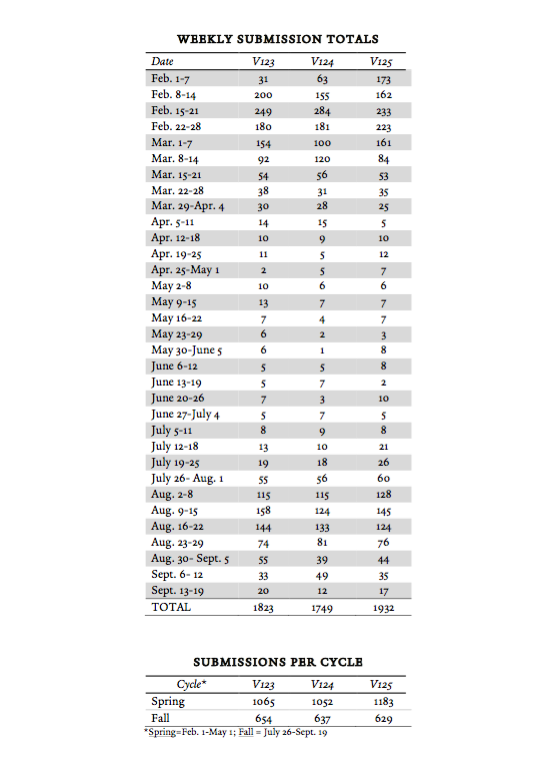Journal Addresses Question "When To Submit?"
“When is the best time to submit my Article?” This is one of the most common questions that the Yale Law Journal (YLJ) receives. The Journal does not take a position on this question; however, we want authors to be able to make well-informed decisions about submissions. To that end, this document provides the weekly submission rates from Volumes 123, 124, and 125 of the Journal.
As the data below illustrates, the Journal’s experience is consistent with anecdotal reports that the spring submissions cycle is increasingly front-loaded, with a growing percentage of pieces submitted in the first half of February. However, this trend has not carried into the fall cycle, where submission ratios have remained relatively consistent across recent volumes.
The prevailing wisdom in the spring cycle appears to be “submit early.” However, from the Journal’s perspective, this approach does not offer any appreciable advantage. YLJ generally publishes sixteen to twenty pieces per volume, and the volume never “fills up.” What’s more, while YLJ is committed to publishing a diverse range of scholarship, we are happy to publish multiple pieces in the same subject area if each offers a valuable contribution. Finally, of the dozen or so publication offers that the Journal makes in the spring cycle, historically a majority have been made in March or later.
Also, authors should know about a possible downside to submitting early in the spring cycle: slower review times. The front-loaded cycle places a significant strain on the Articles & Essays Committee, and in most instances it takes several days—perhaps even a week—before an editor first reviews a new submission. And that is just the beginning.
The Journal’s review process for Articles and Essays includes four steps: (1) an Articles Editor conducts a first read; (2) if the piece shows promise, a subcommittee discusses the piece and votes on whether to send it to the full Committee; (3) the Committee performs a preemption check and collects peer consults from legal scholars; (4) finally, the full Committee deliberates and votes on whether to accept the piece for publication. This process takes two to three weeks under the best of circumstances, and longer during periods when submission rates are highest. Therefore, submitting during the peak period may disadvantage authors who have concurrently submitted to journals with faster review processes—especially if those journals give exploding offers, which may force an author to accept or reject a placement elsewhere before YLJ completes its review process. One way to mitigate this risk is to submit to the Journal a week or more before submitting elsewhere, a practice that we strongly encourage. However, even those authors who do not submit exclusively to YLJ should be mindful of the duration of the Journal’s review process.
For a PDF of this post, please click here.

